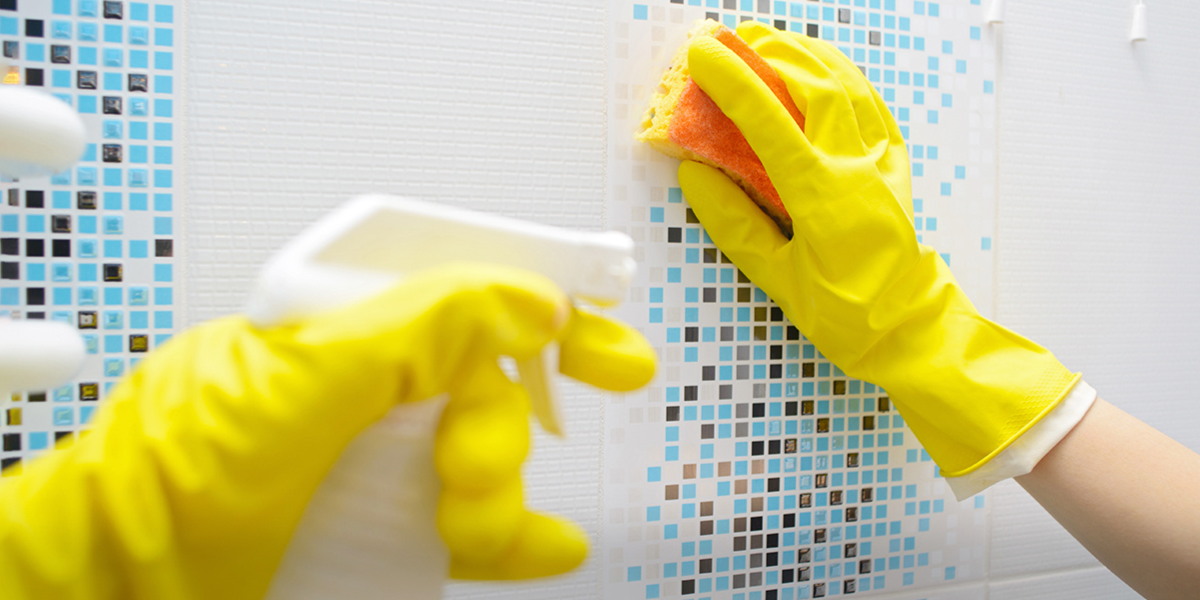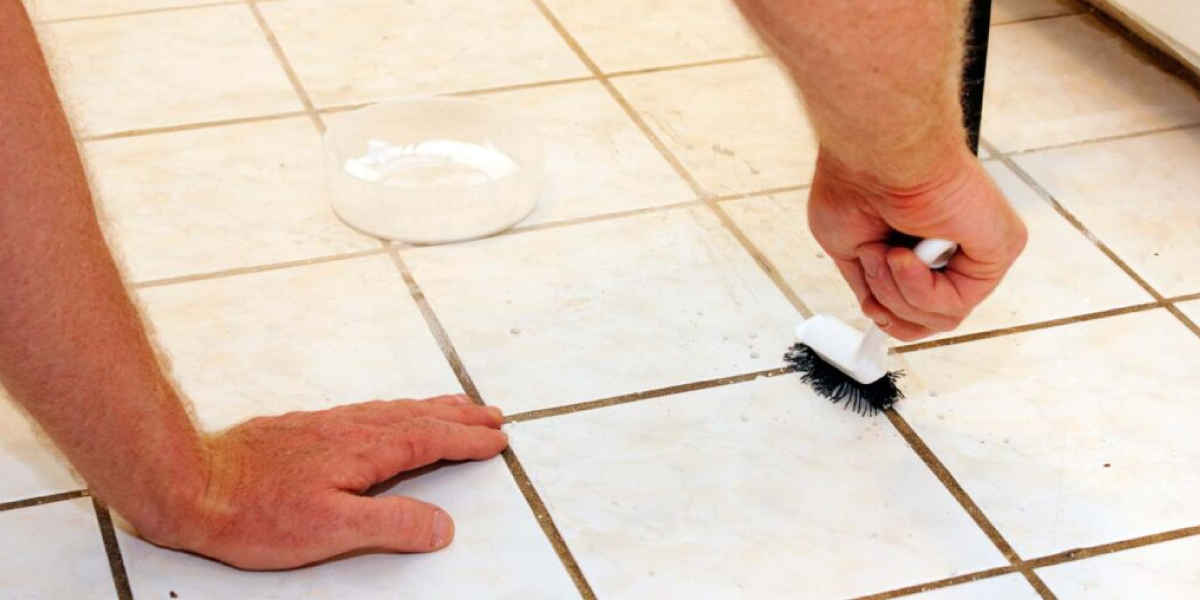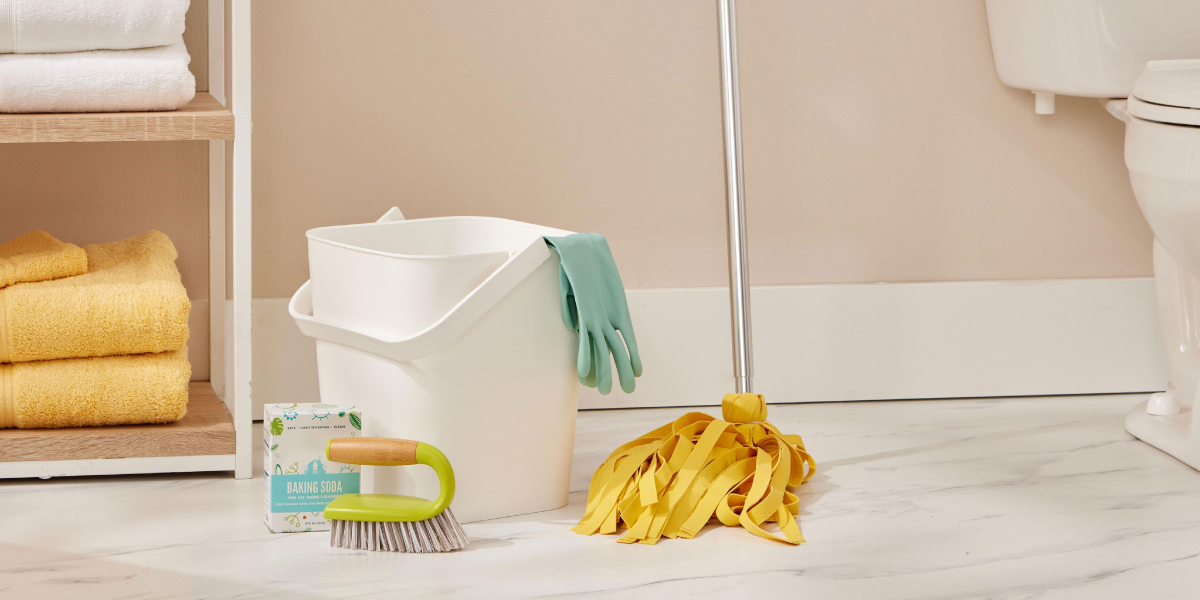You step into the bathroom, and instead of fresh, bright tiles, you see dull spots, soap scum, and stains clinging to the corners. That’s when you start wondering the best way to deal with it. So, how to clean bathroom tiles?
To clean bathroom tiles, first, you should pick a cleaner that’s safe for your tile type, avoid anything too harsh, and always dry them after use so dirt and water marks don’t stick.
Once you get the hang of the right tools and habits, your tiles won’t just look clean; they’ll stay clean for a long time.
Let’s go step by step so you can bring back that just-installed shine without damaging your tiles or wasting time.
First, Know Your Tile Type Before Cleaning
Before knowing how to clean bath tiles, first, you need to know that different tiles need different care. Using the wrong cleaner can cause stains, scratches, or even weaken the grout.
| Tile Type | Safe Cleaning Solution | Avoid These |
| Ceramic | Warm water + mild dish soap | Abrasive scrubbers, strong acids |
| Porcelain | Warm water + vinegar (light dilution) | Oil-based cleaners |
| Natural Stone | Stone-safe pH-neutral cleaner | Vinegar, lemon juice, ammonia |
| Glass | Warm water + dish soap or glass cleaner | Abrasive pads, sand-based cleaners |
Tip: If you’re unsure what tile you have, check your purchase receipt or consult the installer before cleaning.
Bathroom Tile Dos and Don’ts
Following a few basic tile cleaning rules can save you a lot of trouble later.
| Dos | Don’ts |
|
|
How to Clean Bathroom Tiles Yourself: Safe & Easy 3-Step Method

This is a simple weekly cleaning routine that works really well for most ceramic and porcelain tiles. It’s quick, gentle, and helps keep your tiles looking fresh without too much effort.
So, how do you clean bathroom tiles? Here’s the answer:
Step 1: Steam First
Turn on your shower or tub faucet and run hot water for about 2–3 minutes. The steam will start to soften up any dirt, soap scum, or grime on the tiles. This makes the actual cleaning part a lot easier, so you’re not scrubbing as hard later.
Step 2: Apply Your Cleaner
- For normal cleaning: Fill a spray bottle with warm water and add just a few drops of dish soap. This is enough to lift everyday dirt and light stains.
- For deeper cleaning: Here, mix equal parts vinegar and warm water in a spray bottle. This helps break down tough buildup, but skip vinegar if you have stone tiles because it can damage them.
Spray the solution from the top of your wall down to the bottom so it drips and covers everything. Let it sit for a few minutes so it can do its job before you start wiping.
Step 3: Rinse & Dry
Use a microfiber cloth to wipe the tiles clean, then rinse with fresh water to remove any leftover cleaner. After that, take another dry microfiber towel and go over the tiles to remove all moisture. This last step stops water spots and keeps the surface shiny for longer.
How to Remove Stubborn/ Tough Stains from Bathroom Tiles

If you still see stains after tile cleaning, you can make a simple & easy baking soda paste that works wonders.
Just mix about three tablespoons of baking soda with two tablespoons of warm water until it’s thick like toothpaste. Spread it right over the stains and let it sit for 15 to 20 minutes so it can loosen the dirt.
Then, gently scrub with a soft sponge that won’t scratch your tiles, rinse everything off with clean water, and dry the area so it stays spotless.
When to Call a Professional Tile Cleaner
Sometimes DIY just isn’t enough. Call a professional Tile Cleaner if:
- Grout is deeply stained or crumbling.
- Mould has spread behind tiles.
- The tile surface has etched or scratched areas.
- You have natural stone tiles with heavy buildup (these need special products).
How to Protect Bathroom Tiles from Damage

The less dirt and moisture you allow to build up, the less cleaning you’ll have to do.
Protection Tips
- Keep a squeegee in your shower and use it after every use.
- Turn on the bathroom fan during and after showers to reduce moisture.
- Reseal grout lines every 12–18 months for extra protection.
- Wipe water spills immediately to avoid water stains.
Quick Cleaning Frequency Chart
| Task | Frequency |
| Wipe tiles with a microfiber cloth | After every shower |
| Light clean with dish soap | Weekly |
| Deep clean with steam or vinegar | Monthly |
| Grout sealing | Every 12–18 months |
Wrapping Up
So, that’s all about how to clean bathroom tiles. Cleaning bathroom tiles isn’t about scrubbing harder; it’s about cleaning smarter. Use the right tools for your tile type, avoid harsh chemicals, dry your tiles after use, and do small cleanings often to avoid big jobs later.
Also, if you want to know how to clean tile grout, you can check out this detailed guide.
FAQs
- Can I apply bleach to clean bathroom tiles?
Bleach can damage grout and dull tile surfaces, so it’s best to avoid using it. Instead, choose gentle cleaners made for your tile type to keep everything safe and shiny.
- How often should I reseal grout in my bathroom?
Grout must be resealed every 12 to 18 months to protect it from moisture and stains. This helps keep your tiles looking clean and prevents mould growth.
- What is the best way to prevent mould on bathroom tiles?
Keep the bathroom well-ventilated by using a fan during showers and wiping down wet tiles afterwards. This reduces moisture, which stops mould from growing on tiles and grout.
- Can I use vinegar on natural stone tiles?
No, vinegar is acidic and can eat away at natural stone tiles like marble or granite. Use a pH-neutral cleaner specifically designed for stone surfaces instead.
- How do I clean grout lines without damaging tiles?
Use a soft brush and a mild cleaner to scrub grout gently. Avoid harsh scrubbing tools or strong chemicals that can harm both grout and tiles.
- Will steam cleaning damage my bathroom tiles?
Steam cleaning is safe for most ceramic and porcelain tiles and can kill bacteria without chemicals. However, avoid steam on unsealed grout or delicate natural stone tiles.
- Can I apply dish soap to all types of bathroom tiles?
Dish soap mixed with warm water works really well on most ceramic and porcelain tiles, but it’s not recommended for natural stone tiles. Always check your tile’s care instructions first.
- What should I do if my tiles start to peel or crack?
Peeling or cracking tiles usually needs professional repair or replacement. Ignoring these issues can lead to water damage behind the walls.
- How can I remove soap scum quickly?
Use a mixture of warm water and lemon juice or vinegar to break down soap scum. Let it sit for a few minutes before wiping it off with a soft cloth.
- Is it okay to use a squeegee on bathroom floors?
Yes, using a squeegee on bathroom floors after showers helps remove excess water and prevents slippery surfaces and mould growth.
- How to clean shower tiles?
To clean shower tiles, spray them with warm water mixed with a little dish soap or vinegar, then scrub gently with a soft sponge. Rinse well and dry the tiles afterwards to prevent water spots and mould.


Leave A Comment